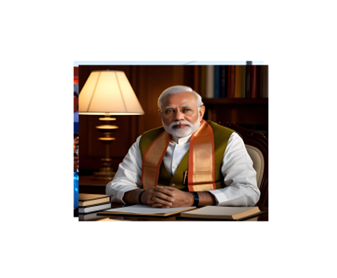Meta Description: Explore the truth behind Narendra Modi’s ambitious $5 trillion economy goal for India. Learn about economic reforms, challenges, and what it means for India’s future. Discover the reality today!
Introduction: A Bold Vision for India’s Future
India, a land of vibrant diversity and untapped potential, has been on an economic journey like no other. Under Prime Minister Narendra Modi’s leadership, the country set its sights on a monumental target: becoming a $5 trillion economy. But what does this vision entail? Is it a realistic dream or a lofty ambition? In this blog, we’ll unravel the policies driving India’s growth, the hurdles standing in the way, and whether this economic milestone is within reach. Let’s dive into the heart of India’s economic transformation with a fresh perspective.
H1: Understanding the $5 Trillion Economy Goal
When Narendra Modi’s government first announced the $5 trillion economy target, it captured global attention. Initially slated for 2024-25, the timeline has shifted to 2027-28, reflecting the complexities of economic growth. But what does a $5 trillion economy mean for India? It’s about boosting GDP to rank among the world’s top economies, creating jobs, and improving living standards for millions. From $2.1 trillion in 2015 to roughly $4.3 trillion in 2025, India’s progress is undeniable. Yet, the path forward demands more than numbers—it requires inclusive growth.
H2: Narendra Modi’s Economic Reforms: The Driving Force
Modi’s leadership has been synonymous with bold reforms. Initiatives like Make in India, Digital India, and the Goods and Services Tax (GST) have reshaped the economic landscape. These policies aim to attract foreign investment, streamline business, and empower a digital-first economy. For instance, India’s digital payments system, led by UPI, handles billions of transactions monthly, showcasing technological prowess. Infrastructure projects—think highways, airports, and smart cities—are laying the foundation for long-term growth. But are these efforts enough to hit the $5 trillion mark?
H3: The Success Stories: What’s Working
Let’s celebrate the wins. India is now the world’s fifth-largest economy, overtaking the UK in 2022. Foreign direct investment (FDI) has soared, with $81 billion flowing in during 2023 alone. The startup ecosystem is thriving—India boasts over 100 unicorns, from Byju’s to Swiggy. Exports are climbing, with electronics and pharmaceuticals leading the charge. These achievements reflect Modi’s vision of a self-reliant India, or Atmanirbhar Bharat. For many, this progress signals that the $5 trillion dream is closer than ever.
H2: The Challenges Holding India Back
No journey is without obstacles, and India’s economic path is no exception. Despite growth, challenges loom large:
- Unemployment: Job creation lags behind demand, with millions of young Indians entering the workforce annually.
- Inequality: A staggering 1% of the population holds 41% of the wealth, leaving rural and marginalised communities behind.
- Poverty: In 2023, 80 crore Indians relied on free foodgrains, highlighting gaps in inclusive growth.
- Global Factors: A weakened rupee and post-COVID recovery have slowed momentum.
These hurdles raise a critical question: can India balance rapid growth with social equity?
H3: Is the $5 Trillion Goal Realistic?
Economists are divided. To hit $5 trillion by 2027-28, India needs a nominal GDP growth rate of 7-8% annually, factoring in inflation. While sectors like IT, renewable energy, and manufacturing show promise, structural issues—like skill shortages and bureaucratic red tape—could derail progress. The rupee’s depreciation also means GDP in dollar terms grows slower than in real terms. Yet, optimism persists. If reforms continue and global conditions stabilise, India could not only meet but exceed this target, potentially becoming the third-largest economy by 2030.
H2: What Does This Mean for the Average Indian?
Beyond the numbers, the $5 trillion goal is about people. It’s about better schools, safer roads, and more jobs for young graduates. It’s about farmers accessing markets and women entrepreneurs thriving. Imagine a small-town student using high-speed internet to launch a global startup—that’s the India Modi envisions. But for this to happen, growth must trickle down. Policies must prioritise education, healthcare, and rural development to ensure no one is left behind.
H3: How Can India Stay on Track?
Here are practical steps to keep the momentum going:
- Invest in Skills: Upskill millions to meet the demands of industries like AI and green energy.
- Boost Manufacturing: Strengthen Make in India to rival global giants like China.
- Focus on Inclusivity: Direct resources to rural areas and marginalised groups.
- Go Green: Embrace sustainable growth to align with global climate goals.
By addressing these areas, India can turn ambition into reality.
Conclusion: A Dream Worth Chasing
Narendra Modi’s vision for a $5 trillion Indian economy is more than a headline—it’s a call to action. While the road is fraught with challenges, India’s resilience, innovation, and youthful energy make the goal attainable. As citizens, we must hold leaders accountable, demand inclusive policies, and contribute to the nation’s growth. Will India become an economic superpower? Only time will tell, but one thing’s certain: the journey is as transformative as the destination.
Call to Action: What do you think about India’s $5 trillion dream? Share your thoughts in the comments, and let’s spark a conversation about the future of our economy!.




No comments:
Post a Comment